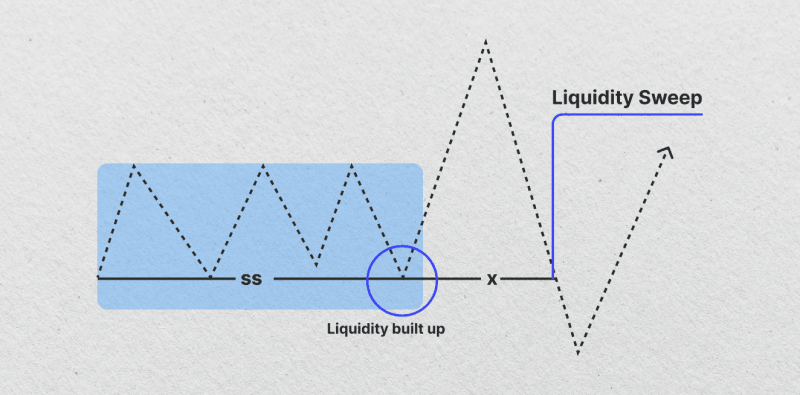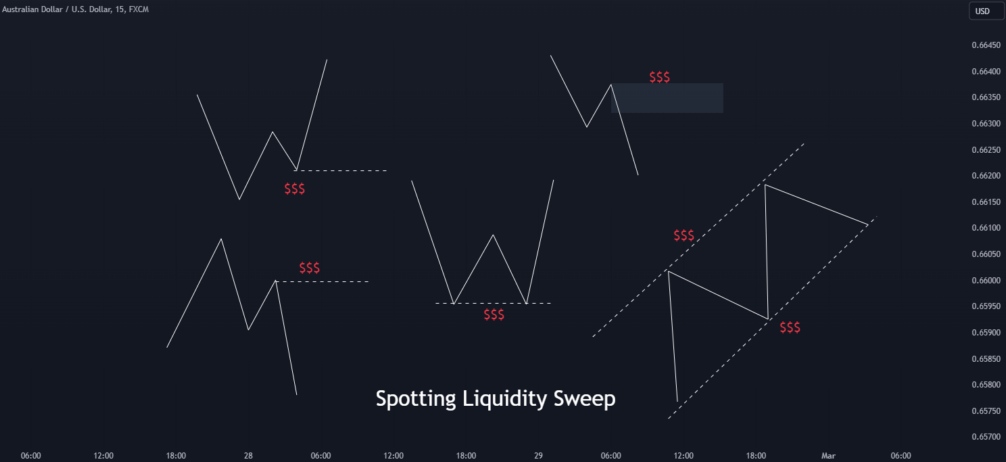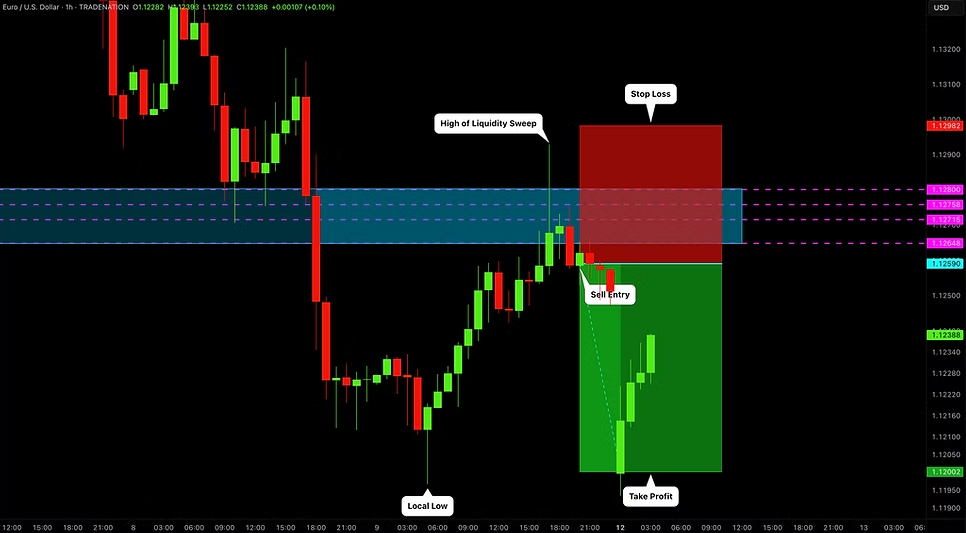In the high-stakes world of forex trading, liquidity is both a vital ingredient and a subtle trap. One of the most misunderstood and underutilised trading concepts among retail traders is the liquidity sweep—a deceptive market move that hunts stop-losses before shifting in the real direction.
This phenomenon is commonly referred to as a "stop hunt" or a "liquidity grab." But for the savvy trader, this trap isn't a threat—it's an opportunity.
This guide explains what a liquidity sweep is, how it functions within the forex market, how institutions leverage it for their benefit, and how you can identify and trade these movements efficiently. By the end, you'll understand how to turn this trap into a profitable trading strategy.
What Is a Liquidity Sweep in Forex?

A liquidity sweep refers to a market move that purposefully breaks through an area of support or resistance to trigger stop-loss orders and collect liquidity. It typically results in a false breakout, where the price pierces a key level only to reverse sharply after capturing pending orders.
This behaviour is no accident. Institutional participants, such as hedge funds and banks, require liquidity to execute substantial orders. Retail traders often place their stop-loss orders above resistance or below support levels. Smart money uses this predictable behaviour to trigger those stops, absorb the liquidity, and enter the market in the opposite direction.
Rather than signalling a genuine trend, a liquidity sweep often serves as a precursor to a reversal. Traders who can identify and time these sweeps stand to gain from swift moves as price reacts after the trap is set.
How to Identify a Liquidity Sweep

Recognising a liquidity sweep in real time requires a sharp eye for market structure, price behaviour, and psychological levels. The price action around support and resistance will give you clues.
Look for a strong move beyond a known support or resistance level, followed by an aggressive rejection. The sweep will often be characterised by a sudden spike in volatility, a quick wick, and then a reversal candle or engulfing pattern signalling the shift in momentum.
Timing is also important. Liquidity sweeps frequently occur when:
Price-sweeping liquidity is often not a continuation—it's a setup. When you see a false breakout that fails to sustain itself and returns inside the prior structure, it's likely a sweep has just occurred.
Real-World Example
Imagine EUR/USD has been trading in a tight range with a visible resistance at 1.0950. Retail traders identify this level and either:
Sell at the resistance with stop-losses above 1.0960 or
Set buy stops just above 1.0950, anticipating a breakout.
Institutions push the price up through 1.0965, triggering the stop-losses and breakout entries. But instead of continuing higher, the pair sharply reverses and drops below the range, stopping out breakout buyers and squeezing short sellers.
This entire sequence is the liquidity sweep—a calculated move designed to fill large orders before reversing direction.
How Smart Money Uses Liquidity Sweeps
The institutional trading model focuses on accumulation and distribution. Before a major move, smart money needs to absorb liquidity. Liquidity sweeps act as their trap, allowing them to:
Collect orders at optimal prices
Trap retail traders on the wrong side
Create momentum through false breakouts
By identifying where retail traders are most vulnerable, institutions use liquidity sweeps to manipulate prices temporarily and gain a strategic advantage.
Once the sweep occurs, the institutions can ride the true move—often the opposite of what most retail traders expect.
Step-by-Step Trading Strategy

Trading the liquidity sweep involves waiting for the trap to trigger, confirming rejection, and then entering with tight risk and favourable reward.
Here's a breakdown of how to trade it effectively:
Step 1: Mark Key Liquidity Zones
Identify major swing highs, lows, and psychological price levels. These are the locations where stops are situated.
Step 2: Wait for the Sweep
Do not anticipate the sweep—let it happen. Watch for a sharp move through the level with a long wick, followed by a swift reversal candle.
Step 3: Confirm the Rejection
Look for a strong engulfing candle or pin bar that forms after the sweep. It confirms that Smart Money has dismissed the false breakout.
Step 4: Enter the Trade
Enter in the opposite direction of the sweep. For instance, if the price clears a high and then declines, you can enter a short position after validation.
Step 5: Place Stops and Targets
Place your stop above the wick of the sweep and target the opposite side of the range or next liquidity level. Use risk-reward ratios of 1:2 or better.
This strategy works well in confluence with:
Best Forex Pairs and Timeframes
Not all markets are equal when it comes to this strategy. Liquidity sweeps are most effective in highly liquid and heavily traded forex pairings.
Currency pairs such as EUR/USD, GBP/USD, USD/JPY, and XAU/USD often exhibit distinct movements at the start of the London and New York sessions. USD/CHF and GBP/JPY are also distinguished by significant price surges that could be driven by liquidity.
Intraday traders may use the 15-minute or 5-minute chart to spot the sweeps, while swing traders may observe 1-hour or 4-hour charts. Combining timeframes offers the best entries with macro confirmation and micro precision.
Why Liquidity Sweeps Works in 2025's Forex Market
With algorithmic and smart money tactics increasingly prevalent in the FX markets, retail traders in 2025 face more advanced forms of manipulation. However, the core behaviour of stop-hunting hasn't changed—it has become more precise and frequent.
The rise of prop firms, social trading platforms, and crowd psychology makes stop clusters easier to predict. As a result, liquidity sweeps remain one of the most exploitable patterns for those who understand market structure.
Whether you're trading major news events or daily session opens, liquidity sweep setups are among the most powerful tools a modern forex trader can add to their playbook.
Conclusion
In conclusion, liquidity sweeps in forex represent both a danger and an opportunity. To untrained eyes, they appear as breakouts or volatility spikes. However, an informed trader indicates institutional activity as an opportunity to trade the reversal assuredly.
Thus, stay patient, stay observant, and let the market show its hand. When it does, you'll know how to take the trade and ride the move—just like the pros.
Disclaimer: This material is for general information purposes only and is not intended as (and should not be considered to be) financial, investment or other advice on which reliance should be placed. No opinion given in the material constitutes a recommendation by EBC or the author that any particular investment, security, transaction or investment strategy is suitable for any specific person.
























